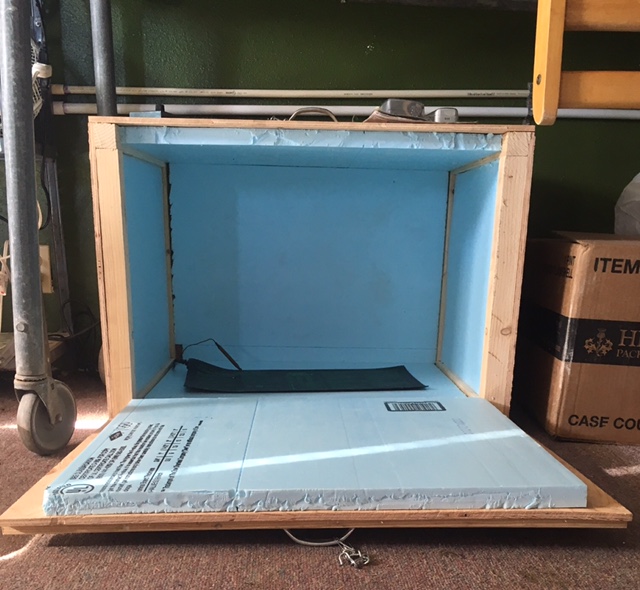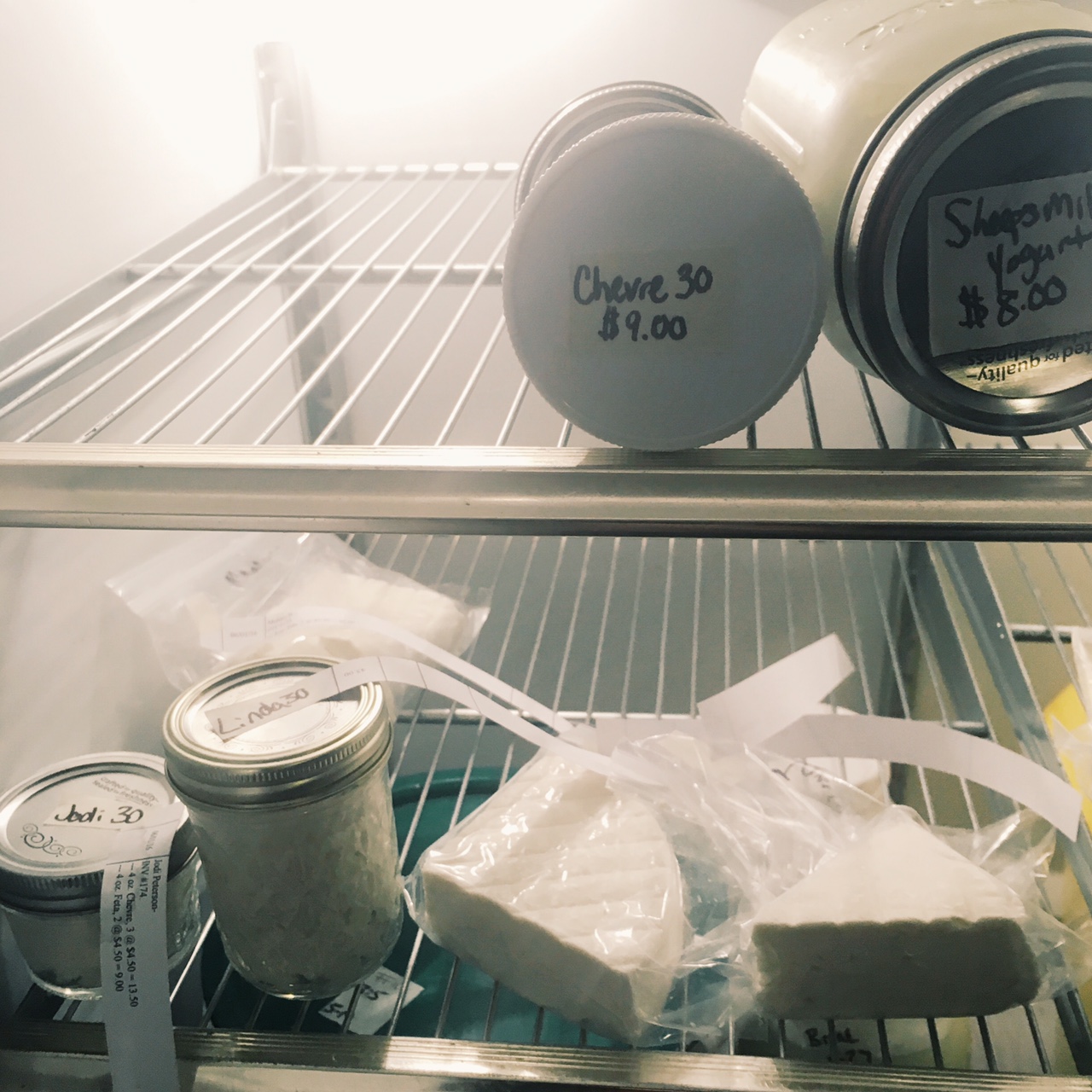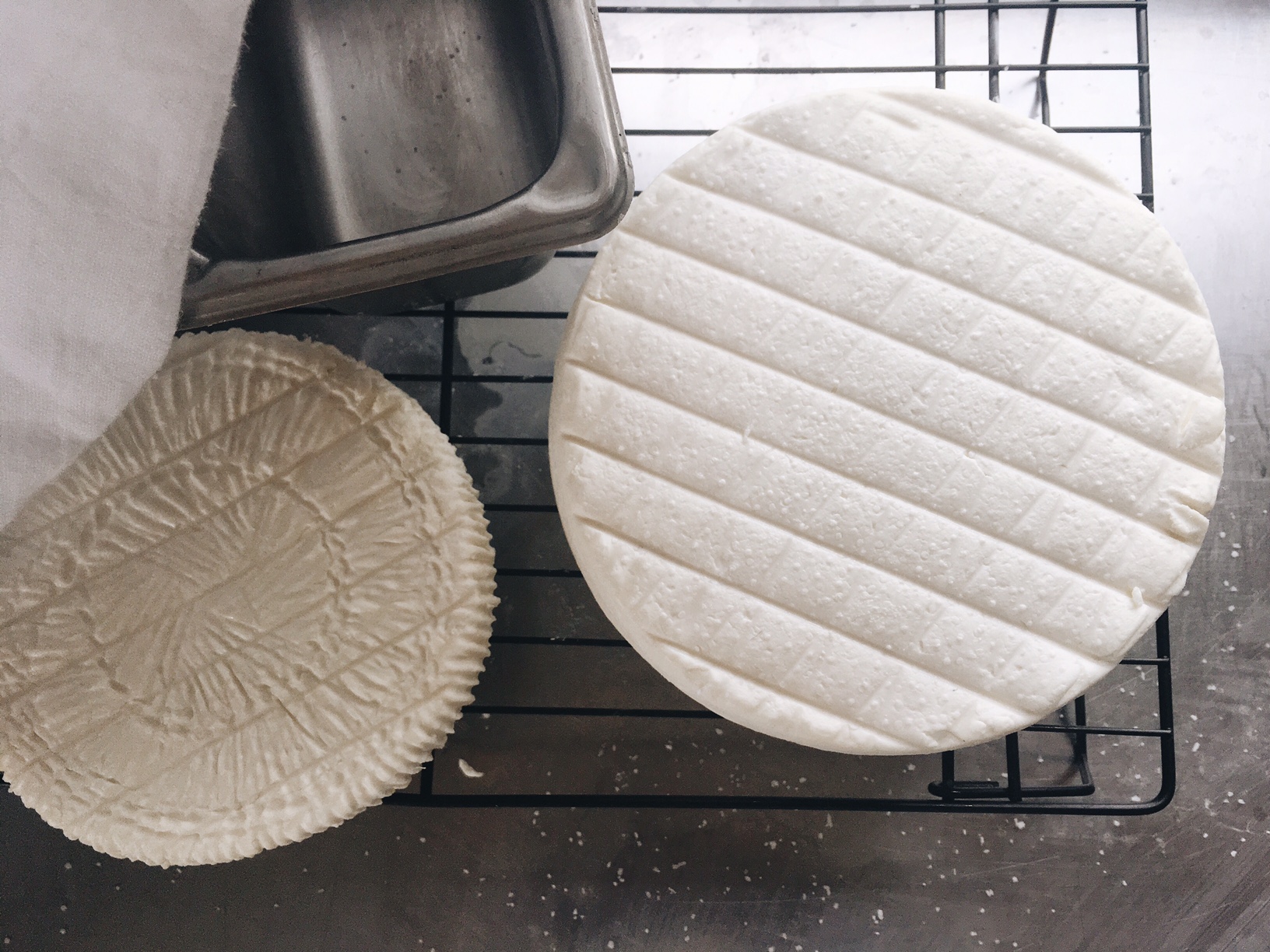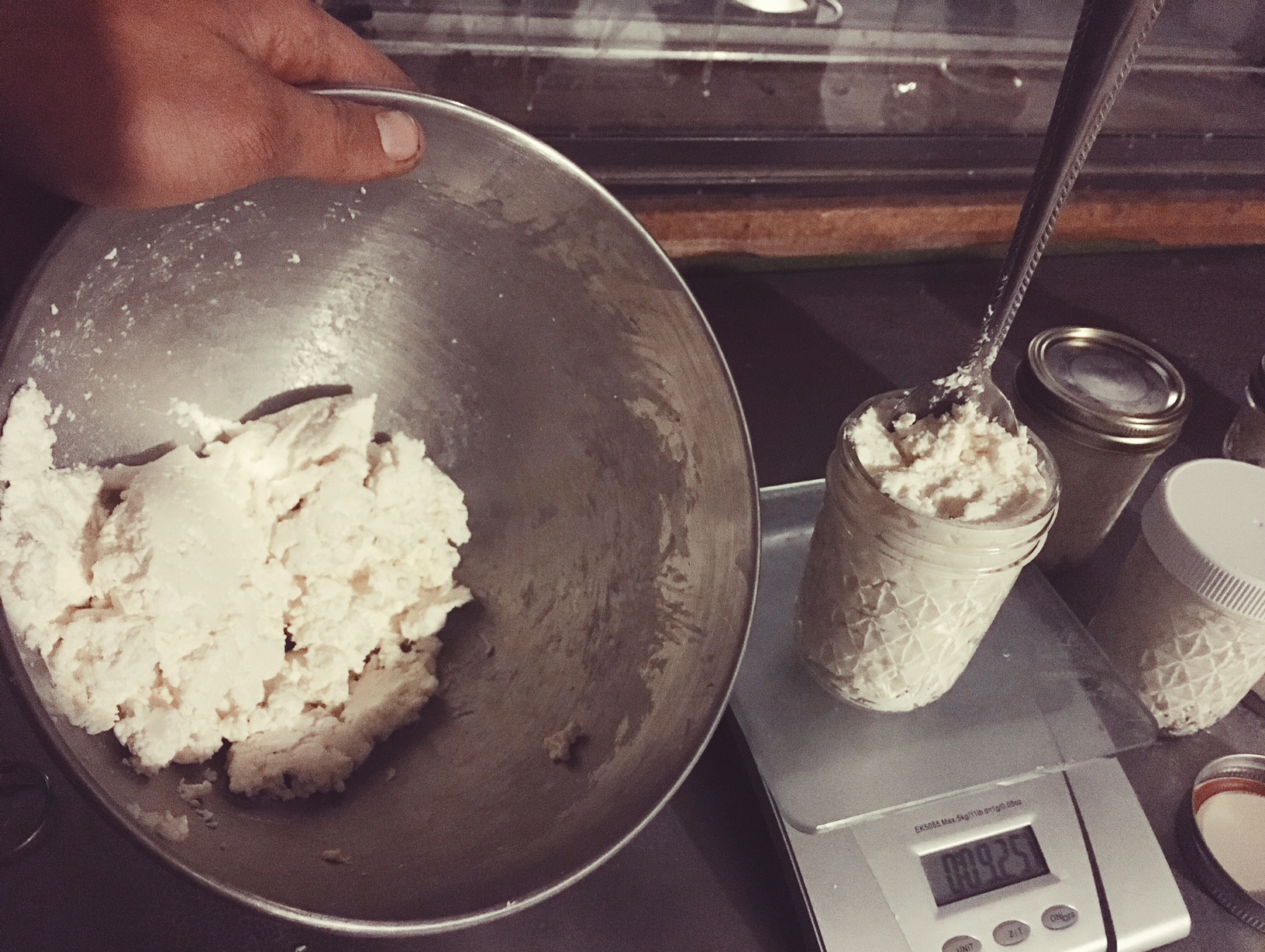A common comment about goat cheese for the general population is the overall flavor and smell. There is a risk when processing goat milk that the product you are making has a distinct "goaty" taste. Not to toot our own horn, but our processing methods and consistent cleanliness of our cheese making has been a big selling point for our cheese. Most customers and tasters have told us that the goat taste that is normally found in goat cheese is nowhere to be found in our cheeses. Also, we are told that our the flavor and consistency of our cheeses are widely enjoyed.
The purpose of this blog isn't really to just talk about how good our cheese is, but really to share our hurdles and accomplishments we've already had since taking on this enterprise. I have been working for Lamborn Mountain Farmstead for a little over two years and have learned the trade of cheese making from them. Since it was originally done at their farm, I had the comfort of having their wisdom and guidance by my side whenever I was making these prodcuts. However, now that the goats and business have moved over to my farm, I had to dive in with both feet and learn how to do all these things on my own environment. Honestly, it was not as easy as I thought it was going to be. Simple things such as temperature control, pH levels and proportions of culture and rennet were all obstacles I had to overcome to get into the groove of making cheese.

The first couple times I made chevre, my wife and I found that it was too grainy- definitely not the creamy consistency we were used to. We found that this insulated box that I designed to keep the cheese warm was essentially re-cooking the cheese. Since the wash room for the dairy can get quite cold, I over-corrected with the temperature regulated box. The chevre had the right flavor, but it cooked too long or got too warm resulting in a spongy cheese that we needed to fix. Then, with the feta, I somehow got a mushy result the first time I made it at our place. I speculated that maybe I didn't use enough rennet, but I knew the cheese was fine. I deducted that it was the brine, so I looked online and asked around to find that it was the pH balance of the brine that I needed to work on. I tried some remedies such as vinegar and calcium chloride that could lower the pH and help firm up the cheese. All in all, so many little things happened before I honed in my skills. I've had multiple food grade thermometers break, I've been so distracted that just being one hour off schedule resulted in a fairly different cheese, and I had to figure out how to drain and age my cheese consistently.
All in all, these little battles just helped me realize how proud I am of being able to do this part of my job. Of all the things that I do on our farm, cheese making is one of the pieces I am most proud of. It's a true depiction of the work we do from start to finish. From the quality of living our goats have to produce good milk, to handling it properly once they are milked, to creating a food that people enjoy so much that I can go through about 5 lbs a week for my customers. It is something we have found to be fun to work with and we are grateful to even be able to provide such service and product.





